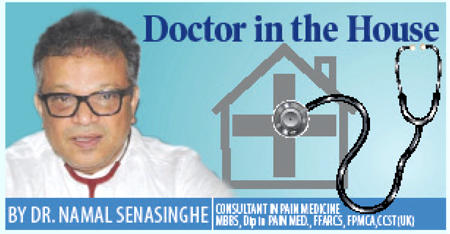 Complex regional pain syndrome (CRPS) is a poorly understood condition where a person experiences persistent severe and debilitating pain.
Complex regional pain syndrome (CRPS) is a poorly understood condition where a person experiences persistent severe and debilitating pain.
It is not a uncommon pain condition.
Although most cases of CRPS are triggered by an injury, the resulting pain is much more severe and long-lasting than normal.
The pain usually only affects one limb, but it can sometimes spread to other parts of the body.
The skin of the affected body part can become so sensitive that a slight touch, bump or even a change in temperature can cause intense pain.
This is called allodynia in medical terms.
Affected areas can also become swollen, stiff or undergo fluctuating changes in colour or temperature.
CRPS often gradually improves over time. But some people with CRPS experience pain for many years.
Causes of CRPS
The cause of CRPS is unknown, but it’s thought to be the result of the body reacting abnormally to an injury.
It used to be thought that CRPS was a psychosomatic condition, where the symptoms are “all in the mind”, but research has disproved this.
Who’s affected
It’s difficult to estimate exactly how common CRPS is, as many cases may go undiagnosed or be misdiagnosed. But it’s thought to be fairly uncommon.
CRPS can affect people of any age, including children. But it tends to be more common in women who are 60 to 70 years of age.
Symptoms
In addition to chronic pain, CRPS can also cause a range of other symptoms.
These can include:
- Hyperalgesia - Increased sensitivity of skin
- Allodynia - Pain to touch
- strange sensations in the affected limb – it may feel as if it does not belong to the rest of your body, or it may feel bigger or smaller than the opposite unaffected limb.
- Alternating changes to your skin – sometimes your skin in the affected limb may be hot, red and dry, whereas other times it may be cold, blue and sweaty.
- Hair and nail changes – your hair and nails in the affected limb may grow unusually slowly or quickly and your nails may become brittle or grooved.
- joint stiffness and swelling in the affected limb (oedema)
- tremors and muscle spasms
- difficulty moving the affected body part
- difficulty sleeping (insomnia)
- small patches of fragile bones in the affected limb – although there’s no evidence this could lead to fractures
- skin infections and open sores (ulcers).
- Muscle atrophy, where the muscles begin to waste away
- Muscle contractures, where the muscles shorten and lose their normal range of movement.
Treating CRPS
There’s currently no cure for CRPS, but there are a number of treatments that can help manage the symptoms.
There are 4 main types of treatment:
- Education and self-management – being given clear information about your condition and advice on any steps you can take to help manage it yourself
- physical rehabilitation –treatment to help manage your symptoms and reduce the risk of long-term physical problems, such as physiotherapy,
- pain relief – treatments to help reduce your pain, such as anticonvulsants, anti depressants
- psychological support –treatments to help you cope with the emotional impact of living with CRPS, such as cognitive behavioural therapy (CBT)
- l Interventions / Procedures
Depending on the limb involved procedures can be performed.
Stellate ganglion block for upper limb CRPS.
Sympathetic chain blocks and radio frequency denervation for lower limb CRPS.
Dr. NamalSenasinghe
MBBS, Dip in Pain Med,
FFARCS, FFPMCA
Consultant in Pain Medicine
Sandwell & West
Birmingham Hospitals
NHS Trust, United Kingdom
